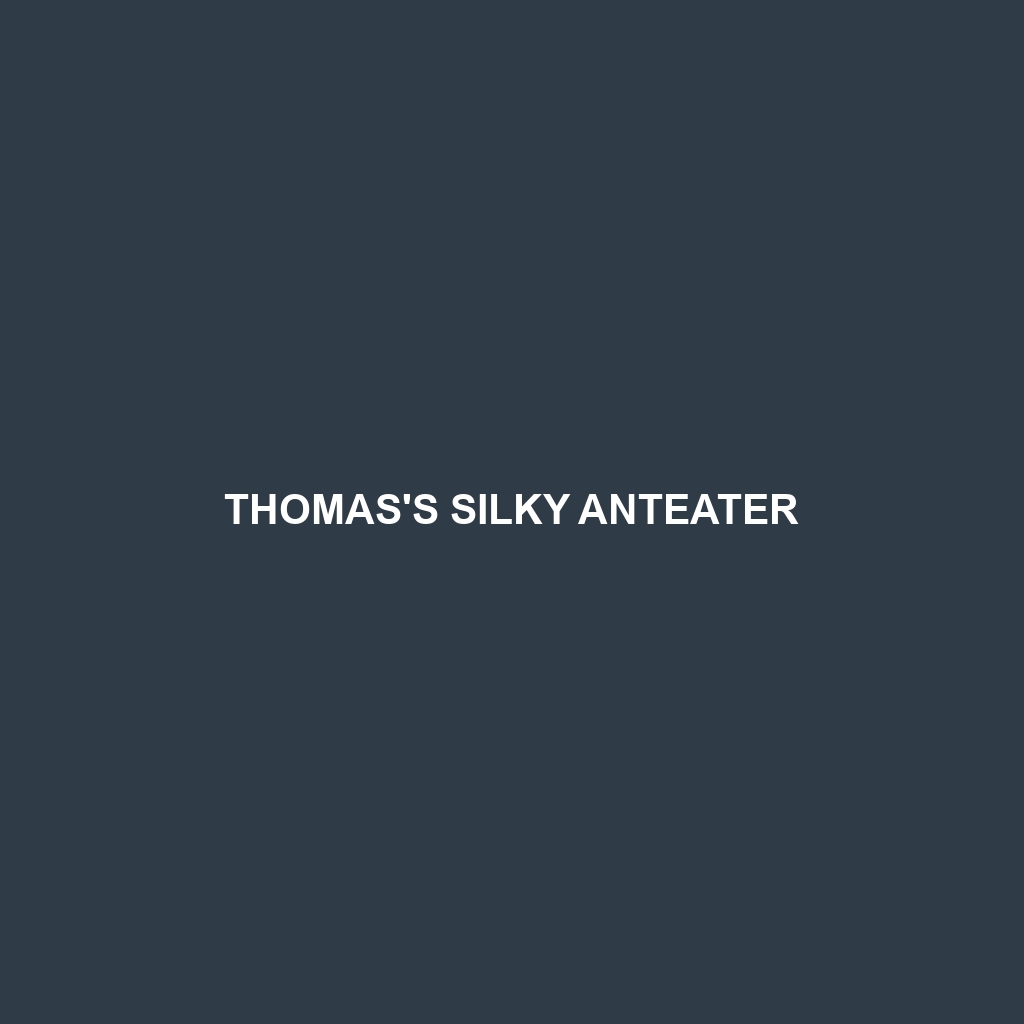Xingu Silky Anteater: A Detailed Description
The Xingu Silky Anteater (Cyclopes xinguensis) is a diminutive, nocturnal mammal native to the tropical rainforests of the Xingu River basin in Brazil. Known for its silky fur and arboreal lifestyle, this elusive creature is a marvel of evolutionary adaptation. Despite its small size, the Xingu Silky Anteater plays a crucial role in its ecosystem by controlling insect populations, particularly ants and termites.
Physical Characteristics
Size: The Xingu Silky Anteater is a petite creature, averaging around 18-23 cm (7-9 inches) in body length with an additional 16-20 cm (6-8 inches) tail. They typically weigh between 200-400 grams (7-14 ounces).
Coloration: This species boasts a striking coat of silky, golden-brown fur that provides excellent camouflage among the rainforest canopy. Their fur is dense and soft, offering protection from the elements and insect bites.
Special Features: The Xingu Silky Anteater has a prehensile tail, which it uses adeptly for grasping branches while navigating the treetops. Its elongated, curved claws are perfectly adapted for tearing into ant and termite nests. Additionally, they have a long, sticky tongue that can extend up to 40 cm (16 inches) to extract insects from narrow crevices.
Behaviors
Social Interactions: Primarily solitary animals, Xingu Silky Anteaters are known to be territorial. They mark their territory using scent glands located on their chest. Interaction with other anteaters is usually limited to mating periods.
Feeding Habits: Their diet primarily consists of ants and termites, which they locate using their acute sense of smell. The Xingu Silky Anteater uses its powerful claws to break into insect nests and then employs its long, sticky tongue to gather its prey.
Ecological Roles: By controlling ant and termite populations, the Xingu Silky Anteater helps maintain the ecological balance within its habitat. This insectivorous diet also prevents the overpopulation of these insects, which can be detrimental to plant life.
Habitat
Natural Habitat: The Xingu Silky Anteater inhabits the dense tropical rainforests of the Xingu River basin in Brazil. They are predominantly found in the mid to upper canopy levels, where they can move effortlessly between the branches.
Adaptations: Their arboreal lifestyle is supported by several adaptations, including a prehensile tail, curved claws, and a lightweight, agile body. Their coloration provides camouflage against predators, and their nocturnal habits help them avoid daytime predators.
Conservation Status
Current Status: The exact conservation status of the Xingu Silky Anteater is not well-documented due to its elusive nature. However, like many rainforest species, it faces threats from habitat destruction due to deforestation and human encroachment.
Conservation Efforts: Preserving the Xingu Silky Anteater’s habitat is crucial. Efforts to mitigate deforestation and promote sustainable land use practices are vital to ensuring the survival of this unique species.
Fascinating Fun Facts
Unique Movement: The Xingu Silky Anteater moves in a distinctive, slow, and deliberate manner, which helps it avoid detection by predators.
Efficient Foragers: Despite their small size, they can consume thousands of ants and termites in a single night, making them highly efficient foragers.
Solitary Sleepers: They sleep curled up in tree hollows or among dense foliage, often covering their face with their tail for additional camouflage.
The Xingu Silky Anteater is a captivating example of nature’s ingenuity, adapting wonderfully to its environment and playing a vital role in its ecosystem. Understanding and protecting this remarkable species is essential for maintaining the biodiversity of the tropical rainforest.
